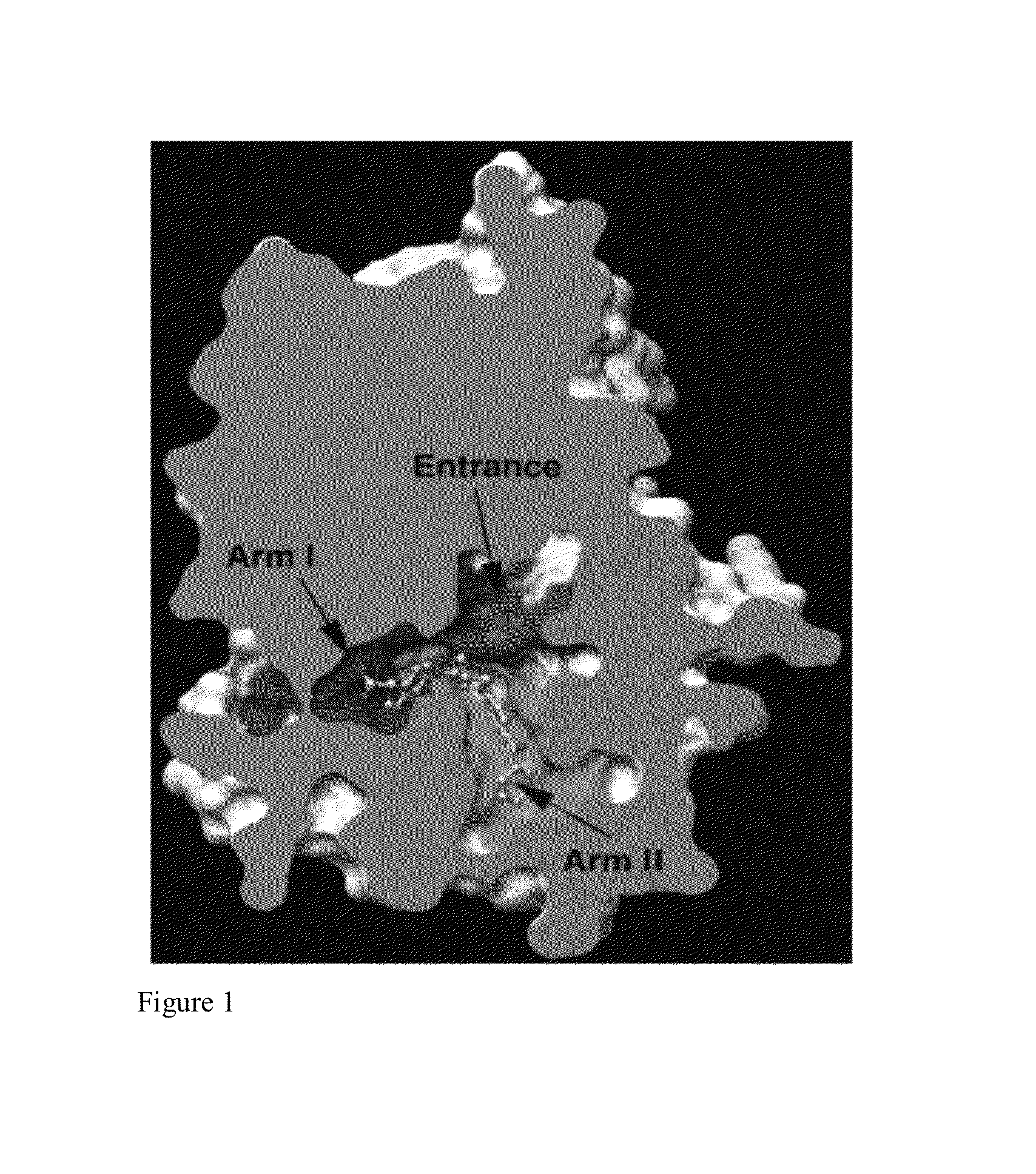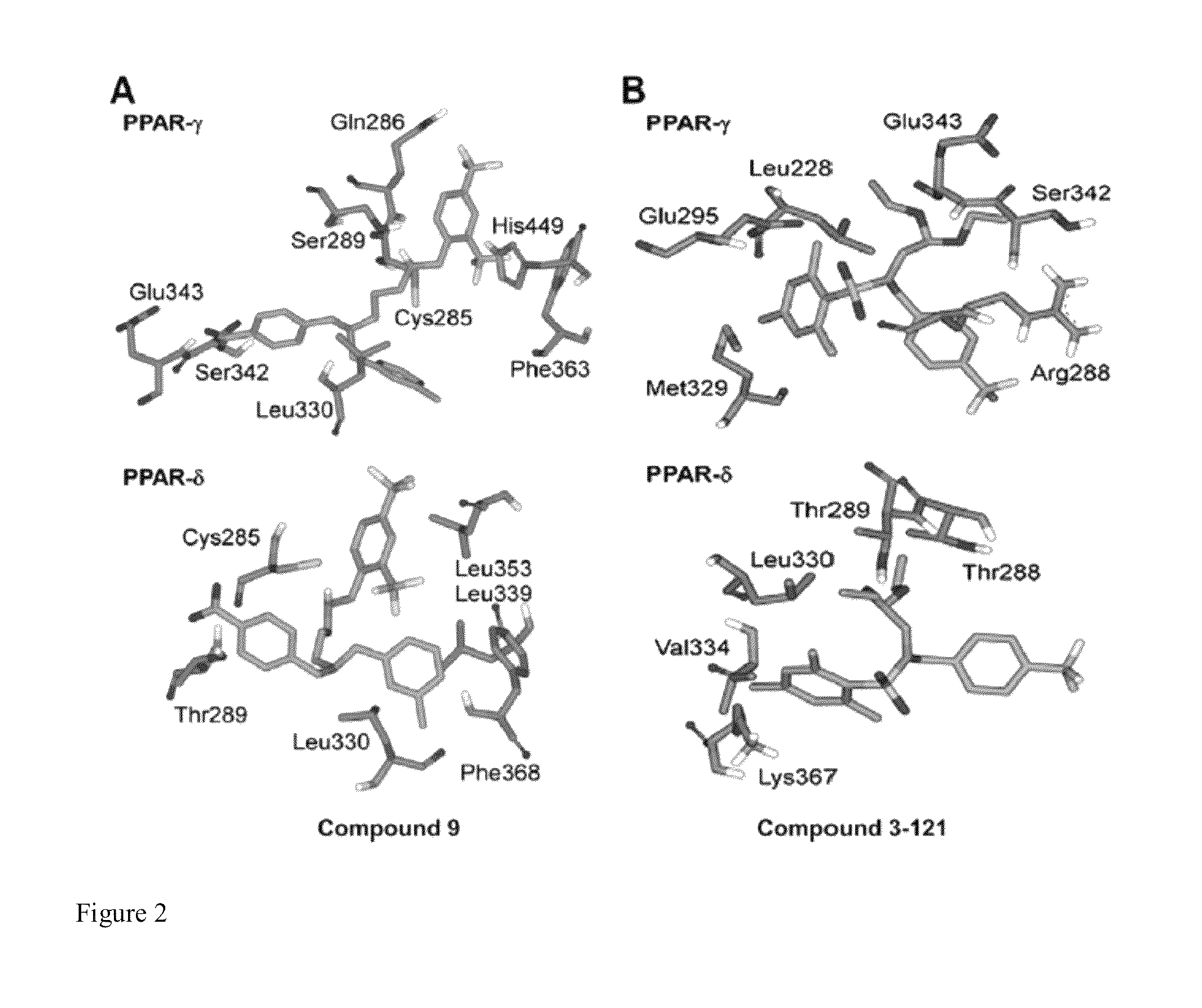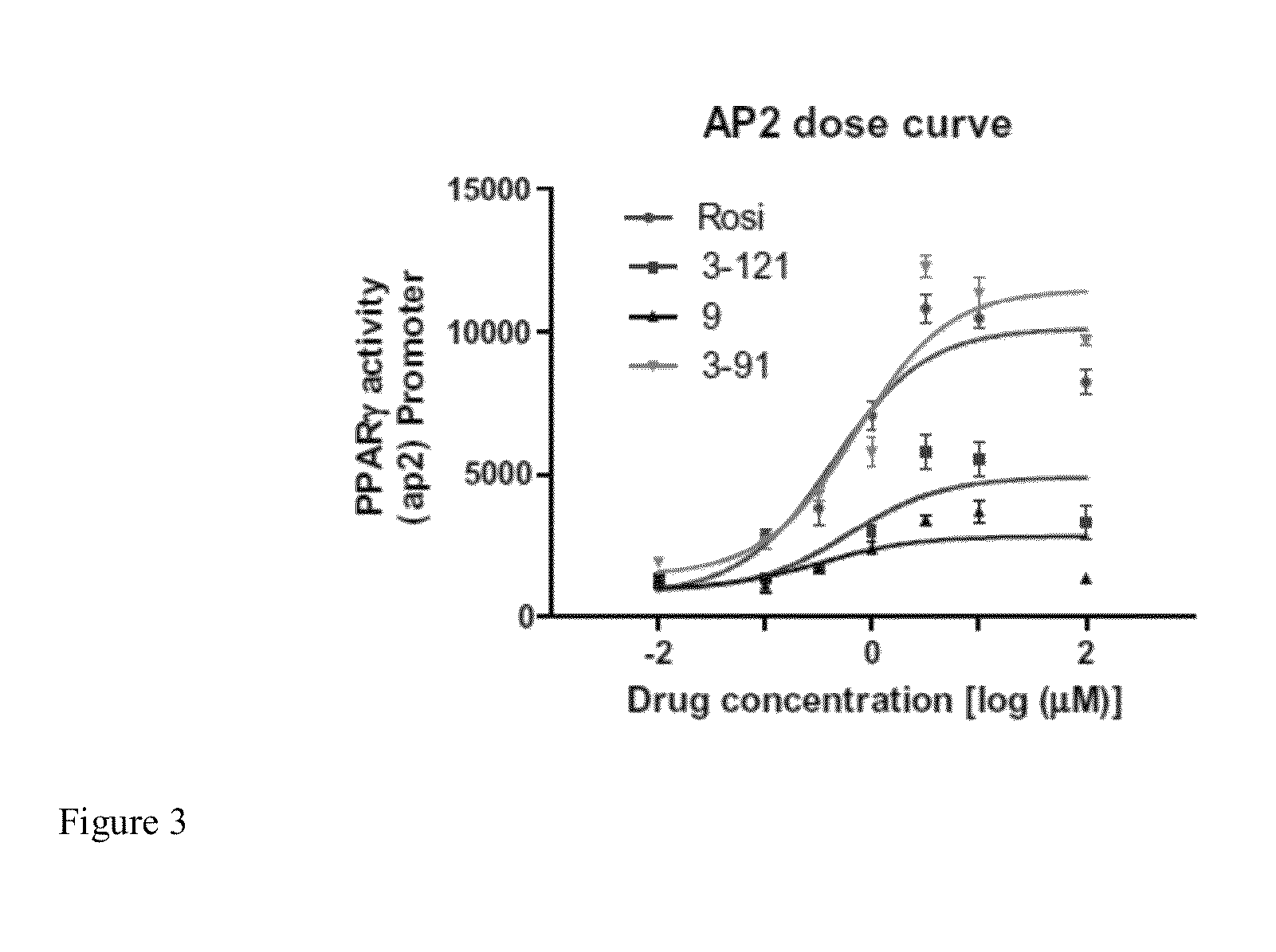Dual PPAR-δ PPAR-γ agonists
- Summary
- Abstract
- Description
- Claims
- Application Information
AI Technical Summary
Benefits of technology
Problems solved by technology
Method used
Image
Examples
example 2
Preparation of an Exemplary Novel Compound: “Compound 3-121”
[0248]A scheme to prepare an exemplary novel compound, “Compound 3-121,” is shown and explained below. Reagents and conditions for the scheme are as follows: (a) 2-mesitylenesulfonyl chloride, 10% NaOH, CH2Cl2 24 h; (b) 4-(trifluoro-methyl) benzyl bromide, NaH, DMF; (c) HBR solution of 33% acetic acid, phenol, EtoAC.
[0249]
[0250]Treatment of aminoacetaldehyde diethyl acetal 1 with 2-mesitylenesulfonyl chloride, 10% NaOH, CH2Cl2 for 24 hours, provided 2. Nucleophilic substitution of 4-(triflouromethyl)benzyl bromide, NaH, DMF, under nitrogen, with 2 yielded 3. The last step required to generate 3-121 was reacting 3 with HBr solution (33% acetic acid), phenol, ethyl acetate, for 24 hours, to create 3-121.
example 3
Computational Methods for Docking Simulation of Novel Compounds
[0251]AutoDock Vina (O. Trott, A. J. Olson, “AutoDock Vina: improving the speed and accuracy of docking with a new scoring function, efficient optimization and multithreading,”Journal of Computational Chemistry, 31 (2010) 455-461) was used to dock known and proposed agonists of PPARδ and PPARγ. Initial Cartesian coordinates for the protein-ligand structures were derived from a reported 1.95 A crystal structure of PPARγ (PDB ID: 3ET3) and a 2.00 A crystal structure of PPARδ (PDB ID: 3GZ9). In the case of PPARγ, the present model included the active site and all residues within 15 A of it. Clipped residues were capped with acetyl or N-methylamine. The reduced PPARγ model consisted of ˜2800 atoms and 162 residues out of 275 residues. The PPARδ model used the protein in its entirety.
[0252]The protein targets were prepared for molecular docking simulation by removing water molecules and bound ligands. Auto-Dock Tools (ADT) wa...
example 4
Binding Capacity of Novel Compounds to Peroxisome Proliferator Response Elements (PPRE)
[0262]To validate the specificity of the novel compounds towards activation of PPARγ / δ targets, we tested the compounds capacity to bind to select PPARγ / δ Peroxisome Proliferator Response Elements (PPRE). The PPRE are unique sites located in the promoter region where PPARs bind and transcriptionally activate the target genes. AP2-PPRE is the PPARγ target involved in adipocyte growth and differentiation. PDK4-PPRE is a PPARδ target involved in regulating energy metabolism in the cell. These PPREs were inserted into a PGL3 luciferase vectors containing CMV promoters (ADDGENE) using PCR. These vectors were co-transfected with RXR, PPARγ / PPARδ and p-galactosidase vectors into HEK-293 cells using Lipofectamine 2000 (Invitrogen). Relative light units (RLU) were measured using a Glomax Luminometer (Promega). Data were standardized to p-galactosidase activity using ONPG (Promega).
[0263]FIG. 3 shows a dose...
PUM
| Property | Measurement | Unit |
|---|---|---|
| Pharmaceutically acceptable | aaaaa | aaaaa |
| Hydrogen bond | aaaaa | aaaaa |
Abstract
Description
Claims
Application Information
 Login to View More
Login to View More - R&D
- Intellectual Property
- Life Sciences
- Materials
- Tech Scout
- Unparalleled Data Quality
- Higher Quality Content
- 60% Fewer Hallucinations
Browse by: Latest US Patents, China's latest patents, Technical Efficacy Thesaurus, Application Domain, Technology Topic, Popular Technical Reports.
© 2025 PatSnap. All rights reserved.Legal|Privacy policy|Modern Slavery Act Transparency Statement|Sitemap|About US| Contact US: help@patsnap.com



